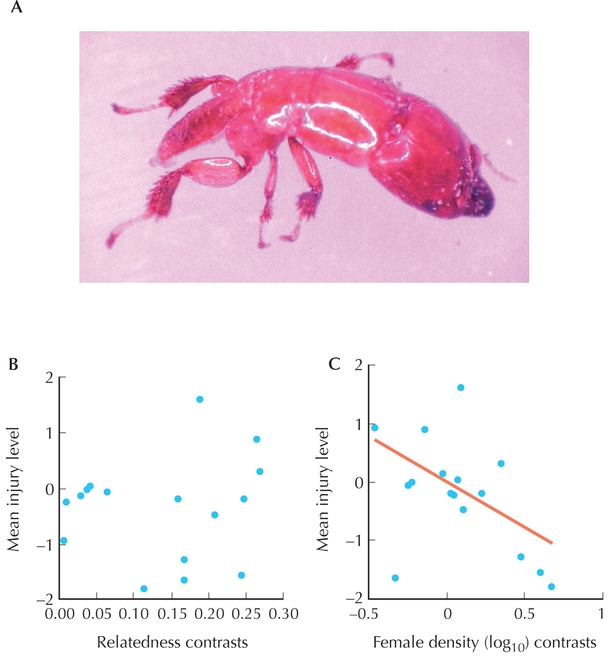Figs and Fig Wasps

Figure WN21.7.
(A) In some species of fig wasp, males are heavily armored and have large mandibles, used for attacking other males within the fig. Fighting between males and decapitation is common in Sycoscaptor australis, shown here. (B) Across species, there is no correlation between the relatedness among males and the level of aggression. (C ) The level of aggression declines with the number of females in the fig: When only a few females are available, it is worth risking injury to fight over them. Each point shows a phylogenetic contrast (Chapter 27) between different clades; difference in injury level is plotted against the difference in relatedness (B) or the ratio of female numbers (C). (A, From http://westgroup.icapb.ed.ac.uk/StudyOrg.html. B, Redrawn from Fig. 1 of West et al. 2001. C, Redrawn from Fig. 2 of West et al. 2001.)
|

